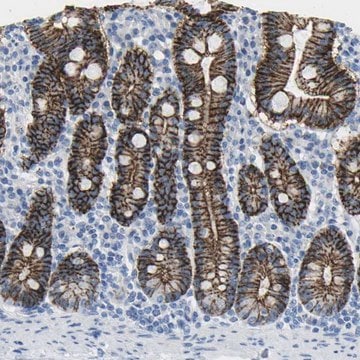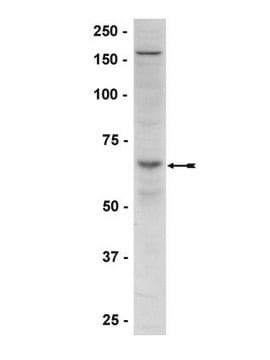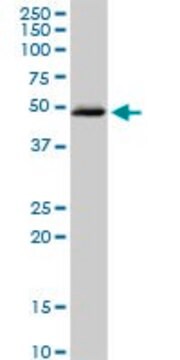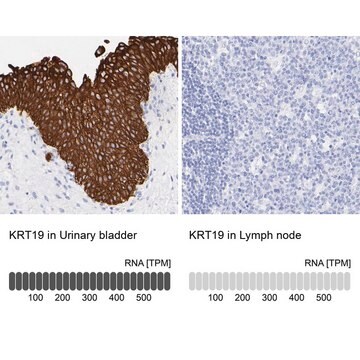ABS981
Anti-phospho-AMPK alpha-1 Antibody, (Thr479)
from rabbit, purified by affinity chromatography
Sinonimo/i:
5′-AMP-activated protein kinase catalytic subunit alpha-1, Thr479-phosphorylated, ACACA kinase, Thr479-phosphorylated, Acetyl-CoA carboxylase kinase, Thr479-phosphorylated, AMPK subunit alpha-1, Thr479-phosphorylated, AMPKa1, Thr479-phosphorylated, HMGCR
About This Item
Prodotti consigliati
Origine biologica
rabbit
Livello qualitativo
Forma dell’anticorpo
affinity isolated antibody
Tipo di anticorpo
primary antibodies
Clone
polyclonal
Purificato mediante
affinity chromatography
Reattività contro le specie
human
Reattività contro le specie (prevista in base all’omologia)
bovine (based on 100% sequence homology), rat (based on 100% sequence homology), porcine (based on 100% sequence homology), horse (based on 100% sequence homology), mouse (based on 100% sequence homology)
tecniche
dot blot: suitable
western blot: suitable
N° accesso Genebanck
N° accesso UniProt
Condizioni di spedizione
ambient
modifica post-traduzionali bersaglio
phosphorylation (pThr479)
Informazioni sul gene
human ... PRKAA1(5562)
Descrizione generale
Specificità
Immunogeno
Applicazioni
Signaling
Western Blotting Analysis: A 1:1000 dilution from a representative lot detected GSK3beta-catalyzed phosphorylation of E. coli expressed, catalytically inactive AMPK alpha-1 recombinant protein (Courtesy of Bruce Kemp, Ph.D., St. Vincent′s Institute of Medical Research in Melbourne).
Qualità
Dot Blot Analysis: A 1:1,000 dilution of this antibody detected 20-0.156 ng of immunogen peptide, but not the corresponding non-phosphorylated peptide.
Descrizione del bersaglio
Stato fisico
Stoccaggio e stabilità
Altre note
Note legali
Esclusione di responsabilità
Not finding the right product?
Try our Motore di ricerca dei prodotti.
Codice della classe di stoccaggio
12 - Non Combustible Liquids
Classe di pericolosità dell'acqua (WGK)
WGK 1
Punto d’infiammabilità (°F)
Not applicable
Punto d’infiammabilità (°C)
Not applicable
Certificati d'analisi (COA)
Cerca il Certificati d'analisi (COA) digitando il numero di lotto/batch corrispondente. I numeri di lotto o di batch sono stampati sull'etichetta dei prodotti dopo la parola ‘Lotto’ o ‘Batch’.
Possiedi già questo prodotto?
I documenti relativi ai prodotti acquistati recentemente sono disponibili nell’Archivio dei documenti.
Il team dei nostri ricercatori vanta grande esperienza in tutte le aree della ricerca quali Life Science, scienza dei materiali, sintesi chimica, cromatografia, discipline analitiche, ecc..
Contatta l'Assistenza Tecnica.








